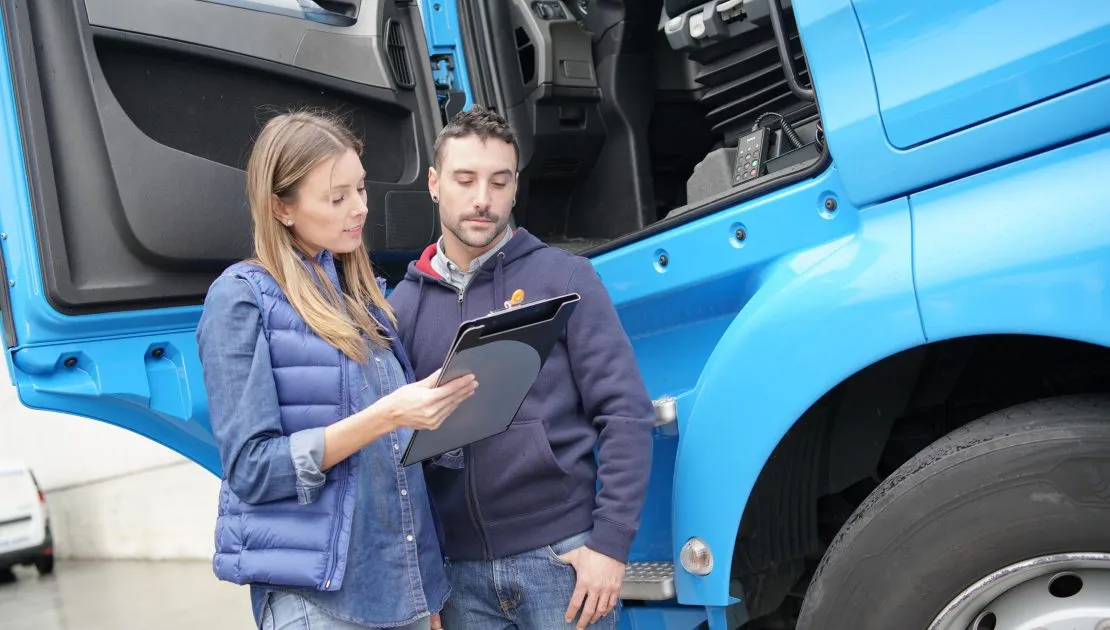The Road to Safer Fleets: A Look Inside RideView's Coaching Sessions
Reducing accidents is a top priority for fleets of all sizes.

Reducing accidents is a top priority for fleets of all sizes. Not only do accidents lead to property damage, injuries and fatalities, but they can also cause downtime, affect business, and drive up insurance costs. One of the most effective ways to reduce accidents for fleets is to improve driver safety awareness through driver coaching.
RideView's new coaching workflow builds on the in-cabin coaching using powerful edge AI in the camera that detects risky driving behavior such as speeding, tailgating, distracted driving, fatigue, cell phone usage, stop sign violations, etc. and uses that data to help fleets improve driver safety and reduce accidents through in-person, personalized driver coaching.
The coaching session is useful for fleets that want to improve driver engagement with in-person discussions about safer driving. Medium to large fleets that have dedicated safety personnel will find this particularly useful.
How RideView Coaching Sessions Work
Step 1: Identifying Coachable Moments
Safety coaches and designated personnel can identify coachable instances by browsing through the safety event videos. If a coachable event is identified, it is bookmarked for coaching.

Step 2: Select for Coaching
The coach can select any video that requires coaching simply by clicking on the “Select for Coaching” button. Coaches can also fine-tune a particular coaching event in the 'Configurations' section, customizing their coaching approach.

Step 3: The Coaching Journey
Once a driver enters the coaching pipeline, they embark on a three-step journey:
- Previous coaching record: Here, the coach delves into the driver's historical coaching experiences and a snapshot of current events. This context sets the stage for the coaching session.
- Coachable Events: This stage presents a curated catalog of events categorized by the type of risky driving behavior. Both the coach and driver discuss each event, marking them as coached or skipping them based on preference. Hearing the driver’s side of the story for each event and going through the videos together increases self awareness for the driver.
- Coaching Summary: After going through the coachable events, a summary is presented to the driver and the coach. To conclude the coaching session,one just needs to click on the "Complete Coaching" button.

Step 4: Continuous Monitoring
Post-coaching, the safety coach can move towards initiating a session with a new driver or reviewing completed coaching sessions within the "Coaching Page." Ongoing monitoring and evaluation are instrumental in optimizing driver performance.

RideView's coaching sessions give fleets the tools they need to make safety their top priority, make drivers better at what they do, and make fleet operations run smoother. They help fleets easily handle their video telematics data, keep an eye on how drivers are doing, and have effective coaching sessions.
For enterprise fleets with dedicated safety personnel, the coaching workflow helps the fleet achieve more results with greater efficiency. Combined with user roles, it is possible to create a safety personnel oriented user role with access provided for what a coach needs - this helps make better use of time for safety coaches.
If you're interested in learning more about the coaching workflow in RideView, please get in touch with us. Your journey to a safer and more efficient fleet starts right here, and we're here to help you every step of the way.

